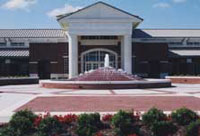
Dimdima
Online Children's Magazine from India

Dimdima
Online Children's Magazine from India

Americans have dubbed the second week of August “back to school week.” As summer gives way to fall, thousands of American students return to the challenging world of schoolbooks, lessons, quizzes, cafeteria lunches, and study buddies. For teenagers who have just graduated from high school, fall is doubly exciting, because they will soon take their first college classes. While many high school graduates go off to study in traditional universities, a growing majority choose to pursue higher education in a uniquely American institution – the Community College.
A myriad of social forces set the stage for the birth and growth of junior colleges, or “community colleges” across the United States. During the mid and late 1800’s, the Industrial Revolution took a strong hold over American society. As people began migrating to Chicago and other industrial towns and cities, the old agrarian economy began to flounder. After the Civil War, and the abolishment of slavery, the cry for social equality became prevalent. The industrial bigwigs needed educated, trained professionals to work for their corporations. Former farm-workers and slaves soon realized that getting a college education was one way to ensure upward social mobility. All this need fueled the need for institutions of higher learning.

Gaining admittance into reputed colleges and universities was not an easy task in those days. Most universities were very elitist and favoured students from the privileged sections of society. The cost of tuition was also no laughing matter. The state governments soon realized the need to set up some kind of public funded and financed college system. Out of this realization was born the first public junior college. It opened in Joliet, Illinois in 1902. In 1907, California state opened its Fresno Junior College. It met with the approval and support of the University of California and Stanford University, two very renowned seats of higher education. The 1947 President’s Commission on Higher Education which advocated free access to two years of educational study beyond high school for all American citizens provided an added impetus to the growth of the community college.
In the early years, Junior colleges were established to approximate the first two years of the university curriculum, and prepare students to be able to transfer to the university after completing the first two years’ worth of course. Students earned an Associates’ degree at the end of their two-year study period. They were then considered to be “half-way” through the Bachelors’ degree program. Today, these colleges are more responsive to the needs of the communities they serve, and are often known as community colleges.
These “open-door” institutions have open admission policies. This means that they enroll any deserving and willing student who is 18 years of age (or older). The primary mission of the community college is to provide accessible, affordable, quality education to members of local communities. These colleges offer courses that include university transfer options, occupational education, continuing education, and community services. Students can earn occupational certificates in areas of their choice. Community members can also take “non-credit” or fun classes like Yoga, swimming, quilt-making, etc. to hone their creative abilities and enhance their personal lives. Several institutions also partner with local business communities and participate in employee training programs.
Although state governments are no longer able to pay 100% of the tuition costs, the popularity of community college is at all all-time high. The relatively low financial costs, the largely open-door policy, physical accessibility, and the development of student services (including counseling, financial aid, disability services, etc.) have helped make the two-year college a huge success. With a promise to improve the lives of its students, community colleges nationwide help keep the American Dream (a chance to make it big) alive and kicking!
Dimdima is the Sanskrit word for ‘drumbeat’. In olden days, victory in battle was heralded by the beat of drums or any important news to be conveyed to the people used to be accompanied with drumbeats.
Bharatiya Vidya Bhavan
K. M Munshi Marg,
Chowpatty, Mumbai - 400 007
email : editor@dimdima.com
Bharatiya Vidya Bhavan
505, Sane Guruji Marg,
Tardeo, Mumbai - 400 034
email : promo@dimdima.com
Dimdima.com, the Children's Website of Bharatiya Vidya Bhavan launched in 2000 and came out with a Printed version of Dimdima Magazine in 2004. At present the Printed Version have more than 35,000 subscribers from India and Abroad.